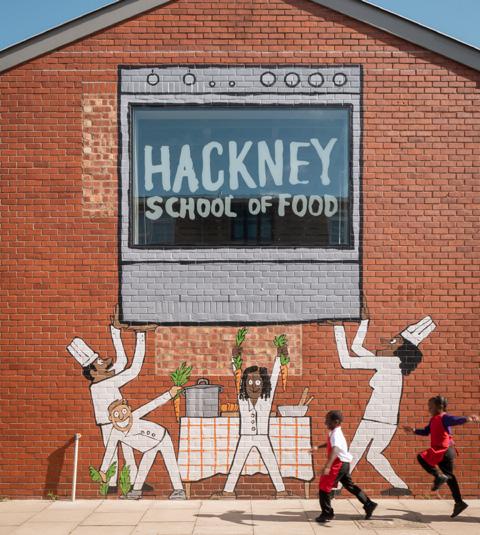
5 minute read
B C
Creating A School Of Food
Getting Started Running A School Of Food
Advertisement
Initial planning. Change the culture. Start small. Planning something bigger? Fundraising tips. Choosing a space. Bringing in the professionals. Finding a suitable architect. The Nitty gritty. Stages of a building project. Requirements & permissions. Building contracts. Designing a School of Food. Site analysis. Brief development. Key design principles. Space planning. Capacity & circulation. Zoning, appliances & equipment. Height-adjustable work stations.
Robust materials & finishes. Simple details & exposed finishes. Building performance upgrades. Minimising structural alterations. External improvements. An identity. Privacy & visibility. Designing the gardens. Kitchen garden plan. Raised masonry planters. Outdoor cooking. Outdoor teaching & dining.
to watering can.
principles.
76
77
79
81
83
85
87
89
91
Operations. Curriculum. Key Stage 1 example curriculum. Example day in the life. Example weekly diary. Volunteers & community. External hire potential. Managing external hire. Marketing tips.
1.0
Getting Started
“Early on Nicole and I used to talk about how we could get better cooking lessons for children. We wanted them to touch, feel and smell vegetables and fruit and really sense what it was. I love seeing everyone smile as they come on to what used to be a derelict site and see the chefs celebrating our produce.”
LOUISE NICHOLS Executive Head, LEAP Federation
This toolkit is for anyone who wants to teach children and their community about growing and cooking good food.
Whether you want to create a whole new cookery school or simply create a few planters on your school grounds, we can help you to get started. We recognize that every school community is unique and so this toolkit is intended for you to adapt it to meet the needs of your pupils, staff and families.
We hope that it will provide some inspiration and handy tips as you develop on your food journey, whatever stage you may be at!
Who We Are
LEAP Federation is made up of three schools in London, formed with the specific aim of equipping children with the skills they need for their future and fostering a love of learning for life. LEAP has put food at the heart of their culture, ensuring children experience and learn to enjoy growing and eating good food.
Chefs in Schools is a school food charity on a mission to transform child health plate by plate, class by class, school by school. We work hands-on in schools in London, Sheffield and the South West – reaching tens of thousands of pupils each day. We train school kitchen teams to make tasty, healthy, generation-powering school food from scratch, using fresh ingredients.
Surman Weston is a multi-award winning architecture practice based in London. We’ve delivered acclaimed projects across a range of sectors including education, community and housing.
Working in collaboration with LEAP Federation and Chefs in Schools, we’ve created the Hackney School of Food –an urban oasis and food education hub with kitchen gardens, beehives, chickens and an orchard.
In 2020, we won the Clarion Housing Group 2020 William Sutton Prize for Social Innovation, which enabled us to produce this toolkit to assist others with ambitions to create their own food schools.
WHAT IS THE HACKNEY SCHOOL OF FOOD? 1.3 1.4
A short history of the Hackney School of Food...
It was on a grey, rainy day sitting in a car outside Mandeville School, that Chefs in Schools’ co-founders, Nicole Pisani, Exec. Chef, and Louise Nichols, Exec. Head at LEAP, had an idea. Looking at an old school building and rundown area of grounds, they asked - could it be turned into something incredible that would benefit pupils?
Henry Dimbleby, co-founder at Chefs in Schools, became a driving force to take the project forwards. The architects, Surman Weston, then brought the vision to life, while many generous donations made it a reality. Over a year, the old building became a cookery classroom, a walled garden and orchards were created, a wood-fired oven was built and the Hackney School of Food was born.
BEFORE
Since the food education hub opened, many eager growers and young chefs have been welcomed in.
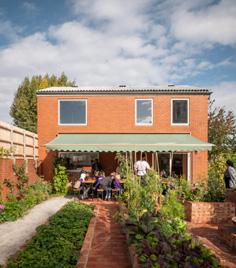
We’ve watched and listened as this pilot project has bedded in. Armed with this school-tested knowledge, we’ve refined the key principles and produced this toolkit to assist others wishing to create their own food education hub.
The Hackney School of Food was designed as a test case to see what could be possible in a school environment.
The design was driven by a number of guiding principles, these were put in place with a view to others replicating the project in the future.
THE SHOCKING TRUTH WHY SHOULD I GET ONE? 2.0 2.1
A School of Food has so much to offer your pupils, staff and our wider society. It creates a learning environment where everyone can shine. Jobs from weeding vegetable beds to grating carrots are met with incredible enthusiasm, but so are projects to sell and market baked goods or to create recipes. And children will happily try vegetables they’ve helped to grow. All of which improves their food culture, which is vitally important in terms of health, attainment and wellbeing.
Research shows that cognition and attainment were found to be higher in primary school children from low-income families with better diets 1. While children with high scores on a ‘snacking’ eating pattern were more likely to have indications of conduct or oppositional disorders than those with low scores 2. And when steps are taken to improve school food standards, child obesity rates fall 3 .
The nation’s diet is a key public health issue. Obesity is becoming a leading cause of preventable illness. And yet the number of children who are overweight or obese continues to rise –as of 20 21 around 25% of children were obese by the time they reached Year 6 4. Obesity costs the NHS over £6bn per year and is said to cost society £27bn per year.
The prevalence of so-called “food swamps”, particularly in deprived areas, is making it increasingly difficult for children to access healthy food 5. But with a positive, innovative approach to food education, we can help children learn to love food that’s good for them and good to eat. Your School of Food can be the place where that life-long love of good food begins. And it can become a revenue earner, a showcase for food education and an asset for your wider community.
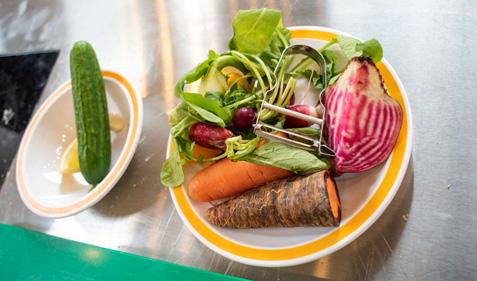
Associations between Food Group Intake, Cognition, and Academic Achievement in Elementary Schoolchildren. Nutrients. 2019
Eating patterns and mental health problems in early adolescence –a cross-sectional study of 12-13-year-old Norwegian schoolchildren. 2014
National
The State of the World’s Children 2019: Children, food and nutrition (UNICEF)
You can hold private sessions for other schools and team building days for corporate groups to generate income.
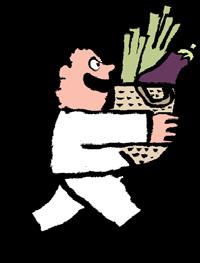
Health
Food can nourish, nurture and sustain a new generation. Eating well at school helps both behaviour and attainment, which in turn aids social mobility and helps children fulfil their potential. We believe getting kids to eat well requires one key ingredient: food education.
Confidence
A pupil who refused to eat beetroots ate one like an apple after making a beetroot chocolate brownie in a food education class. Kids who have refused pasta at lunch, will line up to try it after rolling out dough and making shapes.
Community
A hub that puts food at the centre of your school will never just be about eating, it will be about learning, confidence building, creativity and a place where all kids can shine. A School of Food puts your school at the heart of the community – holding classes for all.
We’ve seen pupils reluctant to try raw veg, plucking carrots from the soil and eating them fresh from the ground.

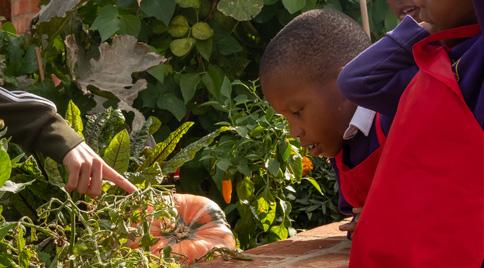
Whether you’re hoping to realise a full blown School of Food, or a simple outdoor growing space, we’ve tried to include as many tips and lessons learned as possible. The toolkit is split into two primary sections:
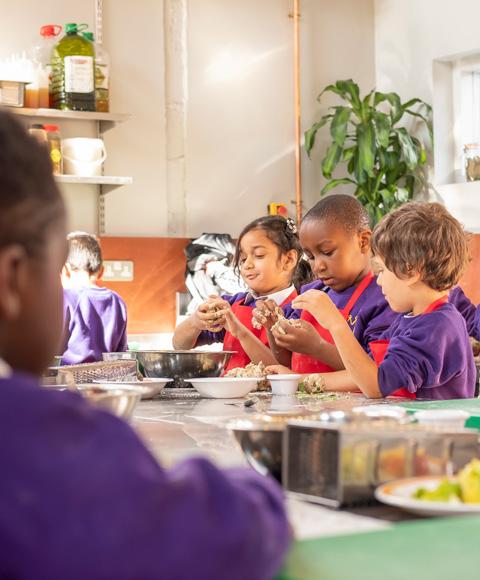
Delivering a food education hub.
Operating a food education hub.
These primary sections are then divided into smaller chapters that focus in on the specifics of certain planning, design, construction and operational phases.
Throughout this toolkit there are links to resources, you can find them all by scanning here.









